Understanding photobiological hazards
LED lighting, despite its numerous advantages such as energy efficiency and longevity, is associated with potential photobiological hazards to vision. Understanding these hazards, safety standards, and recommendations for safe use is key to protecting users' health.
Variety of Hazards Associated with LEDs
LED technology offers a wide range of applications, from general lighting to specialized uses that emit light in specific spectral ranges, including UV, IR, and blue light. Each of these ranges can pose a potential threat to vision, depending on the intensity and duration of exposure. In particular, blue light emitted by some LED diodes is being studied for its impact on the retina and the risk of macular degeneration.
Photobiological safety standards
The European Standard EN 62471 and the International Commission on Illumination (CIE) define photobiological safety criteria for various light sources, including LEDs. The division into risk categories takes into account potential hazards to the eye from UV radiation, blue light, thermal radiation, and IR. These standards aim to help manufacturers and users identify safe practices for using LED light sources.
Safety Assessment of White LED Light
Most LED light sources, especially those intended for general lighting, are classified as safe or low photobiological risk. However, some diodes emitting cool, white light may be classified as having a moderate risk associated with blue light. This is particularly relevant in the context of prolonged use of lighting at close proximity to the user.
Optical Radiation Safety
The European Union's Low Voltage Directive requires LED lighting manufacturers to consider photobiological hazards when marking products with the CE mark. This means that hazards related to optical radiation must be assessed and classified, and information on this subject made available to users.
Challenges and perspectives
Although LED technology is increasingly used, further research into its photobiological safety is necessary. Understanding the long-term effects of exposure to blue light and developing effective strategies to minimize potential hazards is particularly important.
Conclusions for safe use
Safe use of LED lighting requires awareness of potential hazards and adherence to manufacturers' recommendations and safety standards. It is important to avoid prolonged exposure to intense light sources, especially those emitting in the UV and blue range. For manufacturers, it is crucial to provide accurate information on the photobiological safety of their products and promote responsible use of LED technology.
The development of LED technology opens new possibilities in lighting design while posing challenges in ensuring safe use. Continued research in this field and strict adherence to established safety standards will be key to protecting vision in the era of ubiquitous LED lighting.




